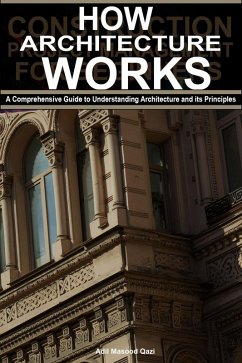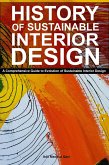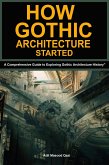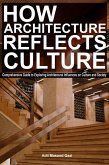The guide explores the fundamental concepts, instruments, and duties that characterize architectural thinking and design in the contemporary world and is intended for both professionals and enthusiasts.
Architects are encouraged to create environments that accommodate a range of needs and abilities by emphasizing accessibility and inclusion as fundamental principles.
Throughout the book, the subject of sustainability is explored through passive design techniques that coincide with natural forces to reduce energy consumption.
Discussions about climate-responsive landscaping, green building standards like LEED certification, and the integration of renewable energy follow from this.
Urban parks, eco-corridors, and green roofs are a few examples of specific case studies that show how design can support ecological balance and blend in with the environment.
The book also acknowledges how technology is changing construction and design. It looks at the impact of data-driven urban planning, the possibility of smart homes and offices, and the emergence of IoT and AI in building management. 3D printing and prefabrication are promoted as ground-breaking technologies that provide speed, effectiveness, and a less environmental impact. The guide is also infused with a profound respect for tradition. The wisdom of culturally grounded, climate-adaptive practices is celebrated in chapters on vernacular styles, indigenous materials, and local building traditions.
These chapters also demonstrate how these practices can be carefully modified using contemporary methods. Architecture's role in legal and civic institutions is practically understood through discussions of zoning laws, permits, and regulatory frameworks.
The book ends with a discussion of the architect's personal growth, stressing the value of lifelong learning, creativity, and critical thinking.
It acknowledges that architecture is about more than just creating structures; it's also about influencing experiences, resolving issues, and adapting to the changing demands of society.
All things considered, How Architecture Works is an extensive, approachable, and captivating manual that honours the multidisciplinary character of architecture and inspires readers to view it as a transforming force that affects all facets of life rather than only as a career.
Dieser Download kann aus rechtlichen Gründen nur mit Rechnungsadresse in A, B, CY, CZ, D, DK, EW, E, FIN, F, GR, H, IRL, I, LT, L, LR, M, NL, PL, P, R, S, SLO, SK ausgeliefert werden.
Hinweis: Dieser Artikel kann nur an eine deutsche Lieferadresse ausgeliefert werden.









